-
 Bitcoin
Bitcoin $116400
-0.36% -
 Ethereum
Ethereum $4033
3.40% -
 XRP
XRP $3.302
-1.26% -
 Tether USDt
Tether USDt $1.000
-0.02% -
 BNB
BNB $796.1
1.67% -
 Solana
Solana $177.8
1.89% -
 USDC
USDC $0.9999
0.00% -
 Dogecoin
Dogecoin $0.2314
4.09% -
 TRON
TRON $0.3381
0.14% -
 Cardano
Cardano $0.7989
1.22% -
 Stellar
Stellar $0.4496
-1.84% -
 Chainlink
Chainlink $20.42
9.42% -
 Hyperliquid
Hyperliquid $41.17
0.88% -
 Sui
Sui $3.914
3.77% -
 Bitcoin Cash
Bitcoin Cash $584.7
1.52% -
 Hedera
Hedera $0.2632
-0.54% -
 Avalanche
Avalanche $24.09
3.40% -
 Ethena USDe
Ethena USDe $1.001
-0.02% -
 Litecoin
Litecoin $123.2
1.33% -
 Toncoin
Toncoin $3.318
-0.04% -
 UNUS SED LEO
UNUS SED LEO $8.984
-0.05% -
 Shiba Inu
Shiba Inu $0.00001323
2.85% -
 Uniswap
Uniswap $10.90
4.41% -
 Polkadot
Polkadot $3.999
3.34% -
 Dai
Dai $1.000
0.01% -
 Cronos
Cronos $0.1630
9.64% -
 Bitget Token
Bitget Token $4.484
0.82% -
 Monero
Monero $272.4
2.44% -
 Pepe
Pepe $0.00001173
6.03% -
 Aave
Aave $290.8
2.88%
How to predict the timing of the high and low points of the day through the volume-price relationship of the time-sharing chart?
Traders use time-sharing charts to predict crypto price highs and lows by analyzing volume-price relationships and divergences throughout the trading day.
Jun 02, 2025 at 06:36 pm
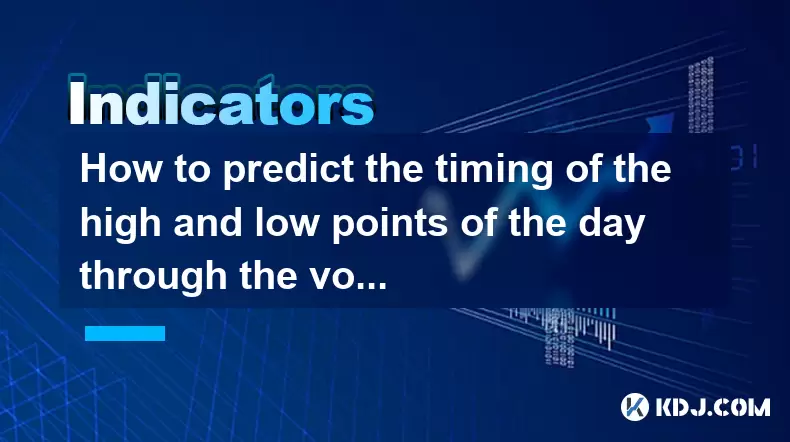
The time-sharing chart is a critical tool for traders looking to understand the intraday movements of cryptocurrency prices. By analyzing the volume-price relationship on these charts, traders can attempt to predict the timing of the high and low points of the day. This article delves into the methodologies and techniques that can be used to make such predictions.
Understanding the Time-Sharing Chart
The time-sharing chart displays the price and trading volume of a cryptocurrency over short intervals, typically every few minutes. This chart is essential for understanding the intraday dynamics of the market. The price line shows the current price of the cryptocurrency, while the volume bars indicate the number of units traded during each interval. By examining the relationship between these two elements, traders can gain insights into market sentiment and potential price movements.
Volume and Price: The Core Relationship
The relationship between volume and price is fundamental to predicting high and low points. High volume often accompanies significant price movements, indicating strong market interest. Conversely, low volume can signal a lack of interest or a consolidation period. When analyzing the time-sharing chart, traders should look for patterns where volume spikes coincide with price changes. For instance, a sharp increase in volume followed by a rapid price rise may indicate an impending high point, as the market reaches a peak of buying interest.
Identifying Potential High Points
To predict high points, traders should focus on volume spikes and price surges. Here’s how to approach this:
- Monitor volume spikes: Look for sudden increases in trading volume. A significant volume spike often precedes a high point, as it suggests a rush of buying activity.
- Observe price momentum: After a volume spike, watch the price closely. If the price continues to rise rapidly, it may be approaching a high point.
- Check for resistance levels: High points often occur at known resistance levels. If the price approaches a resistance level with high volume, it may indicate a potential high point.
Identifying Potential Low Points
Predicting low points involves a similar analysis but focuses on volume drops and price declines. Here’s how to do it:
- Watch for volume drops: A sudden decrease in trading volume can signal a loss of interest and a potential low point. Low volume often accompanies price declines.
- Track price momentum: If the price starts to fall and the volume remains low, it may be approaching a low point.
- Identify support levels: Low points often occur at known support levels. If the price approaches a support level with low volume, it may indicate a potential low point.
Using Volume-Price Divergence
Volume-price divergence is another useful tool for predicting high and low points. This occurs when the price moves in one direction while the volume moves in the opposite direction. For example:
- Bullish divergence: If the price is declining but the volume is increasing, it may signal a potential low point, as increasing volume suggests growing buying interest.
- Bearish divergence: If the price is rising but the volume is decreasing, it may signal a potential high point, as decreasing volume suggests waning buying interest.
Practical Application: A Step-by-Step Guide
To apply these concepts in real-time trading, follow these steps:
- Open your trading platform: Ensure you have access to a time-sharing chart for the cryptocurrency you are interested in.
- Set the time interval: Choose an interval that suits your trading style, typically between 1 to 5 minutes.
- Monitor the chart: Continuously watch the price line and volume bars. Look for patterns where volume spikes or drops coincide with price movements.
- Identify volume spikes: When you see a significant increase in volume, note the price at that time. If the price is rising rapidly, it may be approaching a high point.
- Identify volume drops: When you see a significant decrease in volume, note the price at that time. If the price is falling and the volume remains low, it may be approaching a low point.
- Check for divergence: Look for instances where the price and volume are moving in opposite directions. This can help confirm potential high or low points.
- Act on your predictions: If you believe a high or low point is approaching, consider adjusting your trading strategy accordingly. This might involve setting buy or sell orders at predicted levels.
Case Study: Analyzing a Day's Trading Data
To illustrate these concepts, let's look at a hypothetical day's trading data for Bitcoin (BTC). Suppose the time-sharing chart shows the following:
- At 9:00 AM, there is a significant volume spike as the price of BTC rises from $40,000 to $40,500. This suggests strong buying interest and a potential high point.
- By 10:30 AM, the volume starts to decline and the price begins to fall, reaching $39,800. This indicates a potential low point, as the market loses interest.
- At 2:00 PM, there is a bullish divergence as the price continues to decline but the volume starts to increase. This suggests a potential low point, as buying interest is growing.
- At 3:30 PM, there is a bearish divergence as the price rises but the volume decreases. This suggests a potential high point, as buying interest is waning.
By analyzing these patterns, traders can make informed predictions about the timing of high and low points throughout the day.
Frequently Asked Questions
Q: Can the volume-price relationship be used for all cryptocurrencies?
A: Yes, the volume-price relationship can be applied to any cryptocurrency that has sufficient trading volume and liquidity. However, the effectiveness may vary depending on the specific market dynamics of each cryptocurrency.
Q: How accurate are predictions based on the volume-price relationship?
A: The accuracy of predictions based on the volume-price relationship can vary. While it provides valuable insights, it is not foolproof and should be used in conjunction with other technical and fundamental analysis tools.
Q: Is it necessary to use real-time data for these predictions?
A: Yes, real-time data is crucial for making accurate predictions based on the volume-price relationship. Delays in data can lead to missed opportunities or incorrect predictions.
Q: Can beginners use the volume-price relationship to predict high and low points?
A: Beginners can use the volume-price relationship, but it requires a good understanding of market dynamics and practice. It's recommended to start with small trades and gradually increase exposure as confidence grows.
Disclaimer:info@kdj.com
The information provided is not trading advice. kdj.com does not assume any responsibility for any investments made based on the information provided in this article. Cryptocurrencies are highly volatile and it is highly recommended that you invest with caution after thorough research!
If you believe that the content used on this website infringes your copyright, please contact us immediately (info@kdj.com) and we will delete it promptly.
- SHIB Price, Meme Coin Mania, and the 250x Potential Hunt
- 2025-08-09 16:30:13
- SOL, ETFs, and AI: Crypto's Triple Threat Sensation!
- 2025-08-09 17:10:12
- Tokenized Stock on Solana: SOL Price Reacts to Exodus's Bold Move
- 2025-08-09 17:10:12
- Cardano, Mutuum Finance, Millionaires 2025: A New Wave of Crypto Fortunes?
- 2025-08-09 17:50:12
- Meme Coins on Blockchains in 2025: Hype or the Future?
- 2025-08-09 16:50:11
- World Liberty Financial, Public Listing, and WLFI Tokens: A New York Minute on the Trump-Backed Crypto Venture
- 2025-08-09 16:50:11
Related knowledge

What does it mean when the Triple Moving Average (TRIX) turns downward but the price doesn't fall?
Aug 09,2025 at 12:42pm
Understanding the Triple Moving Average (TRIX) IndicatorThe Triple Moving Average, commonly known as TRIX, is a momentum oscillator designed to filter...

What does it mean when the Williams' oscillator repeatedly hits bottoms but fails to rebound?
Aug 09,2025 at 09:28am
Understanding the Williams %R OscillatorThe Williams %R oscillator, developed by Larry Williams, is a momentum indicator used in technical analysis to...
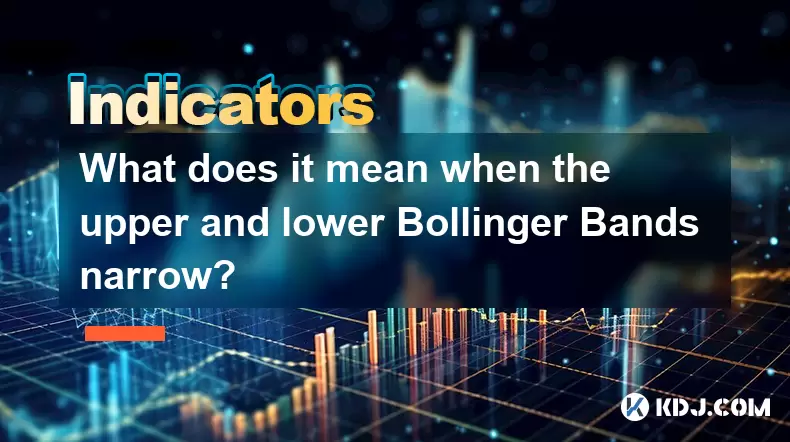
What does it mean when the upper and lower Bollinger Bands narrow?
Aug 09,2025 at 03:00pm
Understanding Bollinger Bands in Cryptocurrency TradingBollinger Bands are a widely used technical analysis tool in the cryptocurrency market, develop...
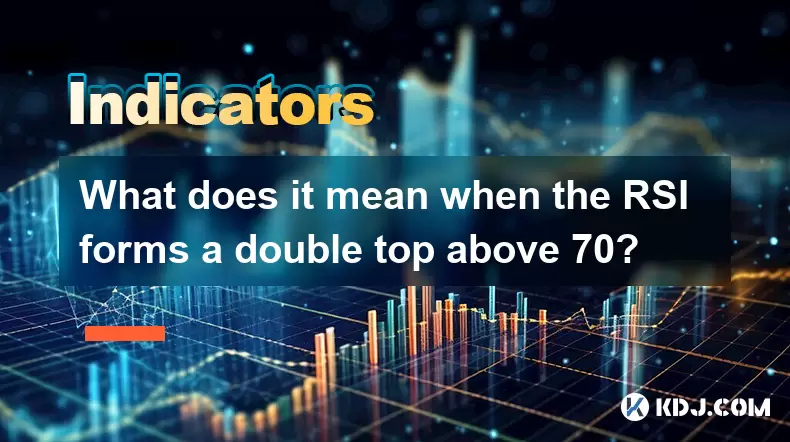
What does it mean when the RSI forms a double top above 70?
Aug 09,2025 at 05:50pm
Understanding the RSI and Overbought ConditionsThe Relative Strength Index (RSI) is a momentum oscillator that measures the speed and change of price ...
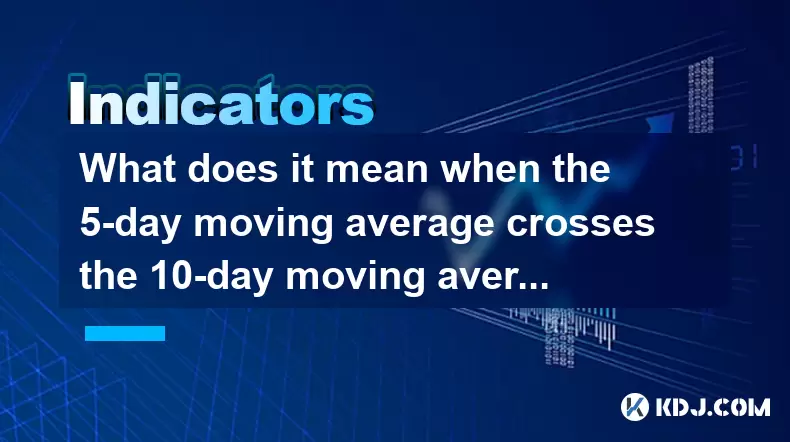
What does it mean when the 5-day moving average crosses the 10-day moving average but the 20-day moving average remains upward?
Aug 09,2025 at 03:35pm
Understanding Moving Averages in Cryptocurrency TradingMoving averages are foundational tools in technical analysis, especially within the cryptocurre...
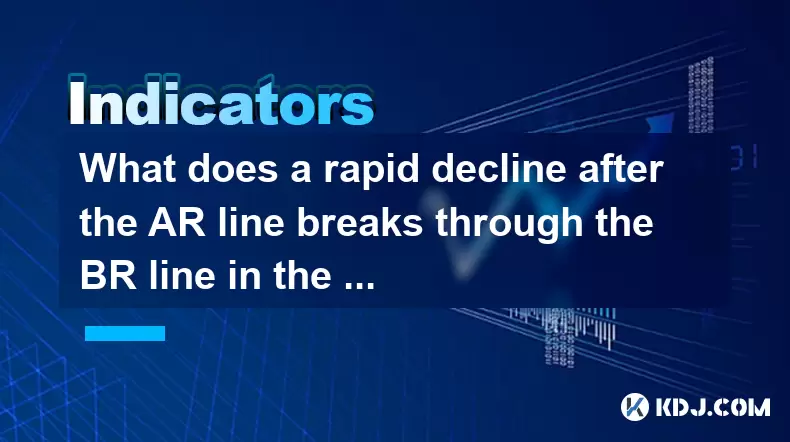
What does a rapid decline after the AR line breaks through the BR line in the ARBR indicator indicate?
Aug 09,2025 at 04:42pm
Understanding the ARBR Indicator ComponentsThe ARBR indicator is a technical analysis tool that combines two oscillators: the AR (Amplitude Ratio) and...

What does it mean when the Triple Moving Average (TRIX) turns downward but the price doesn't fall?
Aug 09,2025 at 12:42pm
Understanding the Triple Moving Average (TRIX) IndicatorThe Triple Moving Average, commonly known as TRIX, is a momentum oscillator designed to filter...

What does it mean when the Williams' oscillator repeatedly hits bottoms but fails to rebound?
Aug 09,2025 at 09:28am
Understanding the Williams %R OscillatorThe Williams %R oscillator, developed by Larry Williams, is a momentum indicator used in technical analysis to...

What does it mean when the upper and lower Bollinger Bands narrow?
Aug 09,2025 at 03:00pm
Understanding Bollinger Bands in Cryptocurrency TradingBollinger Bands are a widely used technical analysis tool in the cryptocurrency market, develop...

What does it mean when the RSI forms a double top above 70?
Aug 09,2025 at 05:50pm
Understanding the RSI and Overbought ConditionsThe Relative Strength Index (RSI) is a momentum oscillator that measures the speed and change of price ...

What does it mean when the 5-day moving average crosses the 10-day moving average but the 20-day moving average remains upward?
Aug 09,2025 at 03:35pm
Understanding Moving Averages in Cryptocurrency TradingMoving averages are foundational tools in technical analysis, especially within the cryptocurre...

What does a rapid decline after the AR line breaks through the BR line in the ARBR indicator indicate?
Aug 09,2025 at 04:42pm
Understanding the ARBR Indicator ComponentsThe ARBR indicator is a technical analysis tool that combines two oscillators: the AR (Amplitude Ratio) and...
See all articles

























































































